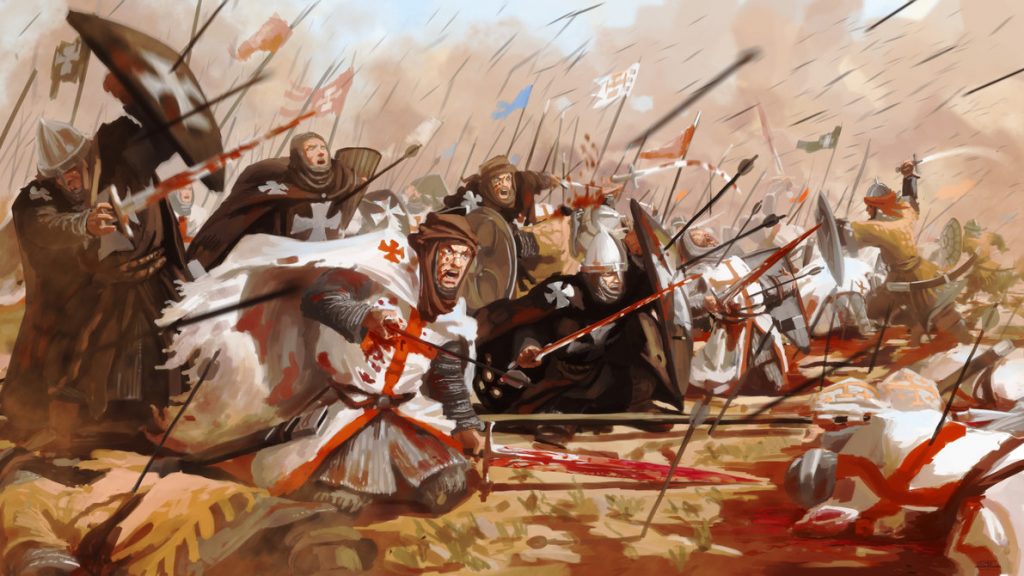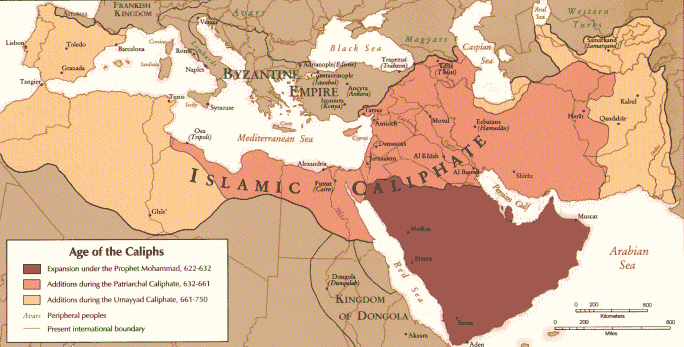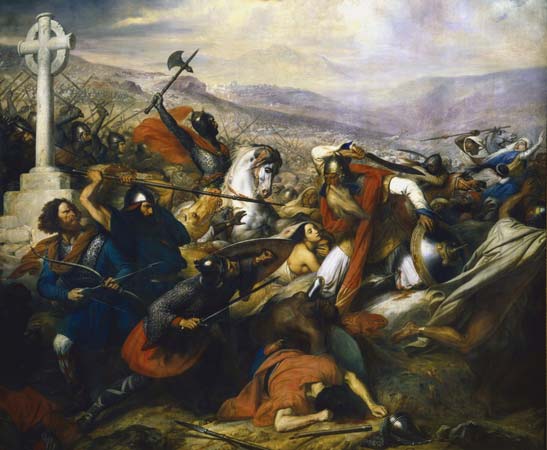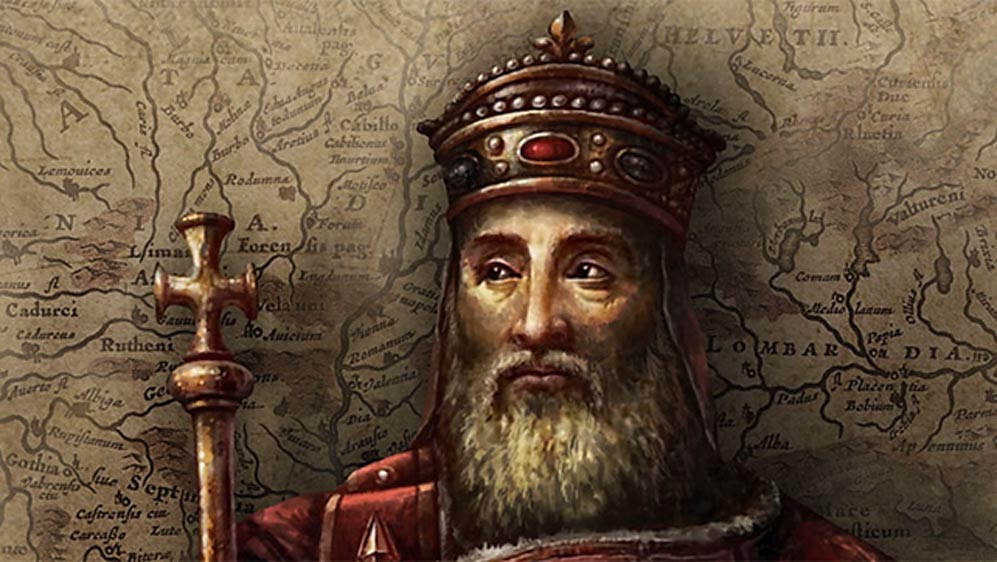
PHOTO: ThingLink.com
Last time, on Battles That Made History, we talked about the famous Battle of Gettysburg. Gettysburg was the most important battle of the American Civil War and the bloodiest battle in terms of American casualties in American history, the battle turned the tide in the Civil War in the North’s favor and spelled ultimate defeat for the Confederate States.
This time, we’re talking about the Battle of Tours, in the year AD 732, when Frankish leader Charles Martel defeated an army of Muslim invaders, effectively stopping the invasion of the Umayyad Caliphate into Western Europe. Had Charles Martel lost the Battle of Tours, the Europe we know today would look very different. Here’s how it went down:
Historical Background

PHOTO: wikimedia
The AD 700s was a period wracked by the Umayyad conquests in Europe. They began in 711, when Saracens invaded the Visigothic Christian Kingdoms in the Iberian Peninsula. From there, Muslim rule slowly spread west over the course of twenty more years, overrunning what was left of the Roman and Persian European Empires. At the time of the Battle of Tours, the Umayyad Caliphate was the most powerful military force in the world, and had swallowed up Hispania, Northern Africa, and what was left of the Byzantine Empire completely.
The Frankish kingdom, on the other side of the battle, was, during the 700s with the fall of the Byzantine Empire, the most powerful military force in Western Europe. If anybody could stand up to the invaders, they could.
Europe was a divided swath of land that would easily fall to the Umayyad Caliphate if the separate kingdoms couldn’t pull together. The Franks were powerful, true, but they were pulled four different ways between Britain’s Saxons, the Frisians, the Moors, and the Basque-Aquitanians led by Odo the Great, Duke of Aquitaine (also called Eudes).
In 719, the Umayyad forces under the Al-Samh ibn Malik al-Khawlani, governor-general of al-Andalus, began to push into Frankish territory. Odo the Great was sandwiched between attacking Franks on his northern borders and attacking Moors on his southern borders.
In an attempt to save his country, he allied himself with the Moors through marriage in 730, but when the politics on the Moorish side grew complicated, the Moors once again turned on Otho.
“God alone knows the number of the slain. [The Moorish forces] pierced through the mountains, trampled over rough and level ground, plundered far into the country of the Franks, and smote all with the sword, insomuch that when [Otho the Great] came to battle with them at the River Garonne, he fled.”
— Chronicle of 754.
As the Moors pushed into his kingdom, Otho the Great suffered enormous losses. Stuck between a rock and a hard place, he sent word to Charles Martel, leader of the Frankish kingdom, and asked for military assistance.
After demanding that Otho the Great surrender to Frankish rule, Charles Martel agreed to join forces with him to push the Umayyad forces out of Frankish territory for good.
The Battle

PHOTO: britannica.com
In 732, the Umayyad forces began to push north. Previously, they had met very little resistance from any European kingdom and were expecting more of the same. Charles Martel stationed his troops at the city of Tours, and there he planned to turn the Umayyad forces away from Europe forever.
Hoping to have the element of surprise, he used the surrounding trees and forest to screen his true numbers. When the invading forces met Martel at Tours, they were completely caught off-guard to find a well-armed, seasoned force of fighting men blocking their path to the city.
With that surprise firmly in hand, instead of immediately attacking, Charles Martel shored up his forces at Tours and went on full defensive, taking the high ground in cold weather. The lightly-dressed, small force of Umayyad troops would be forced to attack them uphill. Their commander, Abd-ar-Rahman, Muslim governor of Cordoba, was a proven commander, but he hadn’t expected a resistance like this, and he’d been completely outmaneuvered.
The next seven days became a waiting game between the two commanders. Abd-ar-Rahman kept waiting for Charles Martel to become over confident and show his true numbers. Charles Martel was waiting for Abd-ar-Rahman to charge uphill and begin the fighting. A few skirmishes happened, but nothing significant.
Finally, on the seventh day, when the Umayyad forces received reinforcements, the battle began in earnest. Abd-ar-Rahman, trusting in his heavy cavalry, charged them several times against the Frankish footsoldiers.
![Phalanx formation. This was commonly used by Greek and Roman footsoldiers, and rarely used during the Middle Ages. Charles Martel used the phalanx to hold his forces against the Umayyad heavy cavalry. [PHOTO: kingofwallpapers]](https://historythings.com/wp-content/uploads/2017/01/phalanx-007.jpg)
Phalanx formation. This was commonly used by Greek and Roman footsoldiers, and rarely used during the Middle Ages. Charles Martel used the phalanx to hold his forces against the Umayyad heavy cavalry. [PHOTO: kingofwallpapers]
“In the shock of battle the men of the North seemed like a sea that cannot be moved. Firmly they stood, one close to another, forming as it were a bulwark of ice;”
— Mozarbic Chronicle of 754.
Charles was fighting the Battle of Tours not only on the field, but also in his opponent’s own camp, which was the chief reason he won. Even as Umayyad troops who had broken into the phalanx tried to take Charles down, his own men protected him, and Charles kept the morale high and the formation tight. Hard-pressed as he was, he sent scouts to wreak havoc in the Umayyad base camp.
The Frankish scouts broke into the Umayyad camp, stole supplies, weapons, and armors, and set as many slaves and horses free as they possibly could. Part of Abd-ar-Rahman’s army was forced to withdraw to defend the base camp. It was then that Charles Martel made his move on the Umayyad forces. He pushed forward. Abd-ar-Rahman was surrounded and killed in the battle.
With the death of their general, the Umayyad forces were routed and fled out of France. Charles Martel claimed the victory of Tours, and the Muslims would never again return as a formidable invading force to Western Europe.
Aftermath

Charles Martel’s famous descendant: Charlemagne. Charlemagne was the founder of the Holy Roman Empire. [PHOTO: ancient-origins.net]
Charles Martel’s victory at Tours shaped the course of European History for hundreds of years to come. Western Europe remained a largely Christian region. After his victory, Charles Martel’s family, the Carolingians, became a ruling dynasty to be reckoned with. Under his control, Charles expanded Frankish territory. It was a legacy that would be continued by his son, Pepin. His grandson, Charlemagne, created a massive empire that encompassed much of Western Europe – an empire that would later be known as the “Holy Roman Empire”. It would stand for ten centuries as a powerful political, religious, and military force. The Battle of Tours changed the face of Europe forever, it was truly a battle that made history.

